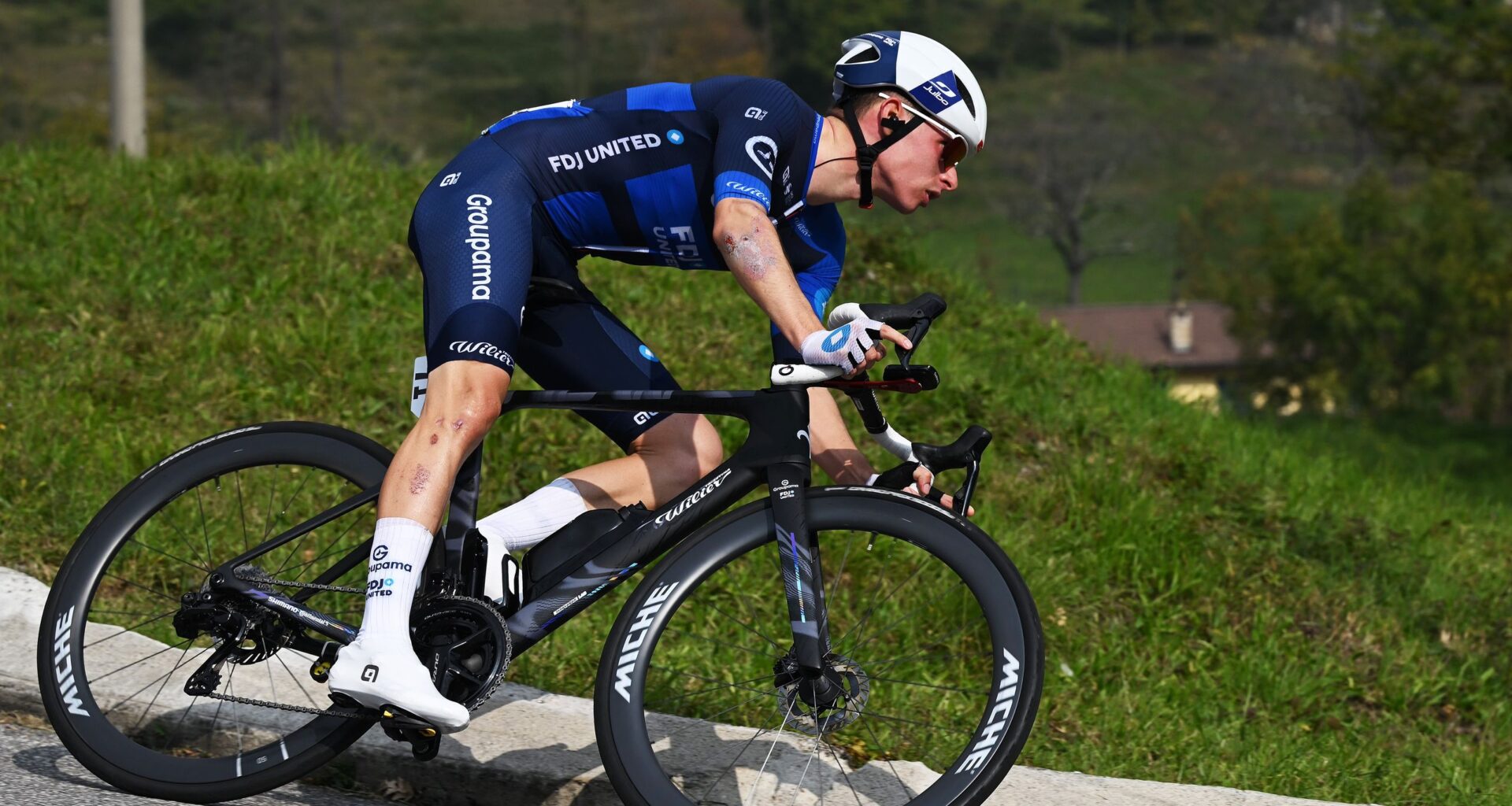The shadows were beginning to grow long as Tadej Pogačar (UAE Team Emirates-XRG) flashed across the finish line alone at Il Lombardia to take his record-equalling fifth straight victory in the fifth and final monument of the year.
Remco Evenepoel (Soudal-QuickStep) and Michael Storer rounded out the podium at the race of the falling leaves. And behind them, 94 other men finished the race, including Frenchman Romain Grégoire (Groupama-FDJ), who crossed the line in 83rd place.
While all eyes were on the reigning champion before the race, though, Cyclingnews spotted that Grégoire’s would be tackling the race on a mystery new Wilier race bike.
You may like

Cyclingnews Editor at Large, Stephen Farrand, spotted this black Wilier racked next to the team bus at Il Lombardia. There appears to be a couple of clear differences. (Image credit: Stephen Farrand)

The brand – or the team – went for a matte black finish with what appears to be spray paint effect sections in light grey. Perhaps to make it harder to pick out certain details, we’ll have a go, though. (Image credit: Stephen Farrand)
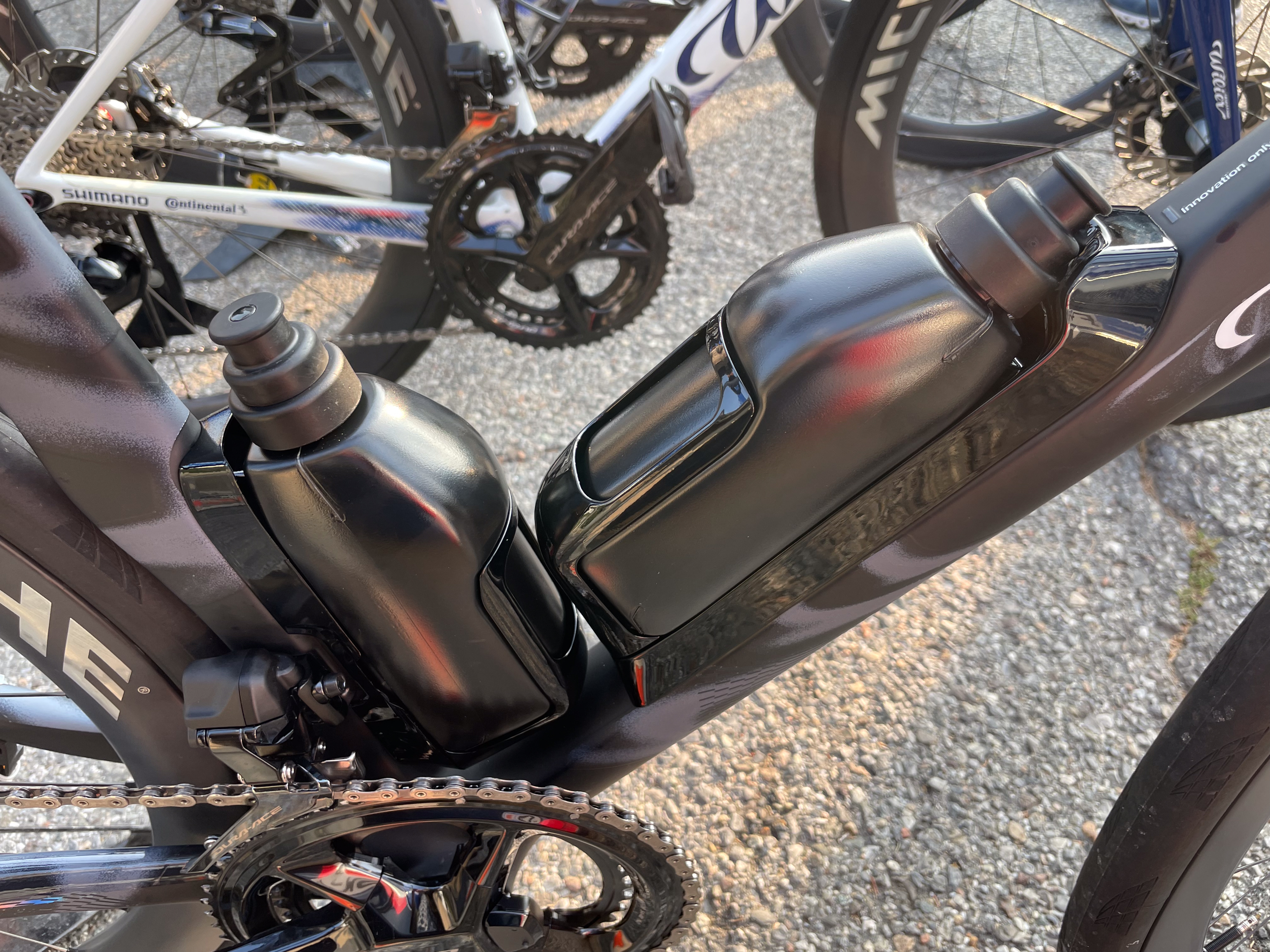
Here’s the main event: this bike has aero bottle cages and bottles that are semi-integrated into the frame. Wilier appears to be joining brands like Trek that use an aero bottle to boost performance and fill a portion of the frame triangle. (Image credit: Stephen Farrand)

Here’s another look at the bottle cage. It fits neatly enough against the downtube of the bike. (Image credit: Stephen Farrand)

The cages themselves are sizable compared to regular ones; there’s bound to be some aerodynamic claims and statistics here. (Image credit: Stephen Farrand)

‘Be the fastest version of yourself’ instead of a rider name sticker for the Tour of Lombardy. That’s a neat Wilier 3D-printed race number holder too. (Image credit: Stephen Farrand)

The cages and bottles appear to take up a healthy amount of room at the bottom of the frame’s main triangle. Meanwhile, the tyre clearances don’t look vast at the rear. (Image credit: Stephen Farrand)
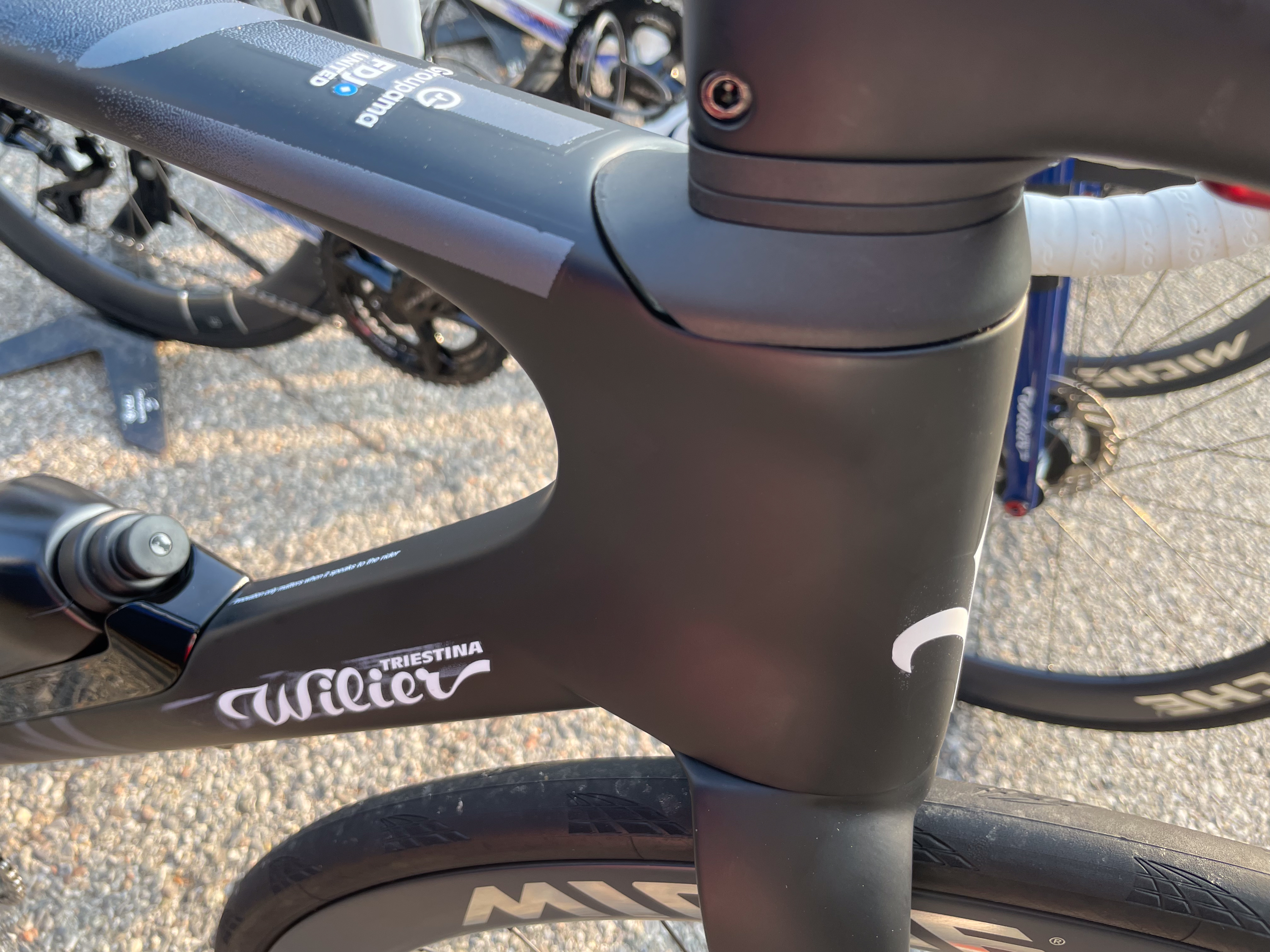
The front end of the bike looks a little more similar to the current Filante; the headset bearing cover looks to be a bit more integrated into the top/head tube, though. (Image credit: Stephen Farrand)

The fork legs look relatively normal, certainly not as wide as those on a few aero race bikes nowadays, like the Factor prototype. (Image credit: Stephen Farrand)

This is a better shot; the fork legs look a little wider, there’s probably clearance for a 32mm tyre here. The fork crown profile looks a little different to the current one as well. (Image credit: Stephen Farrand)
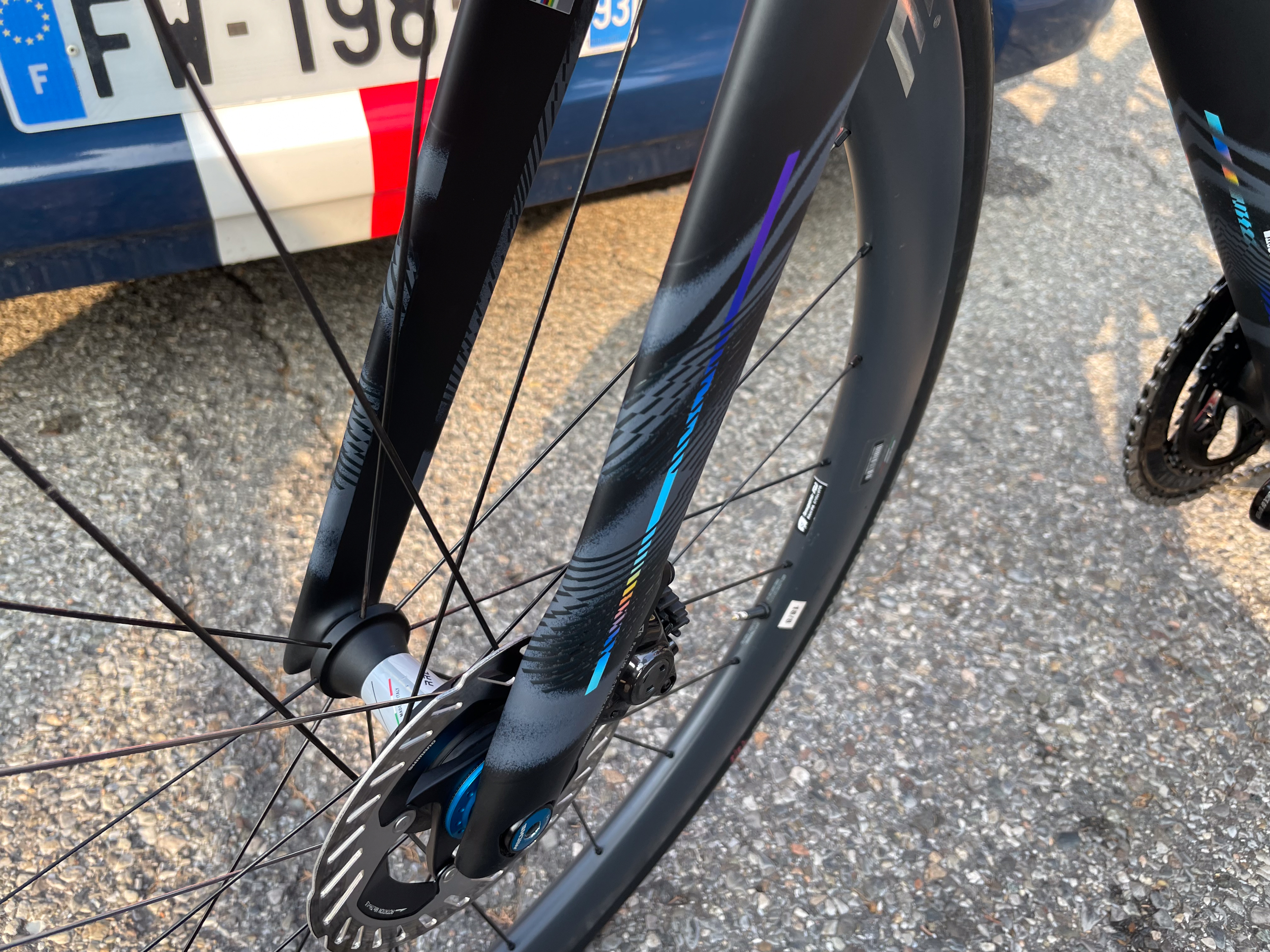
Is that a more aero, wider fork leg profile, particularly near the brake caliper? (Image credit: Stephen Farrand)
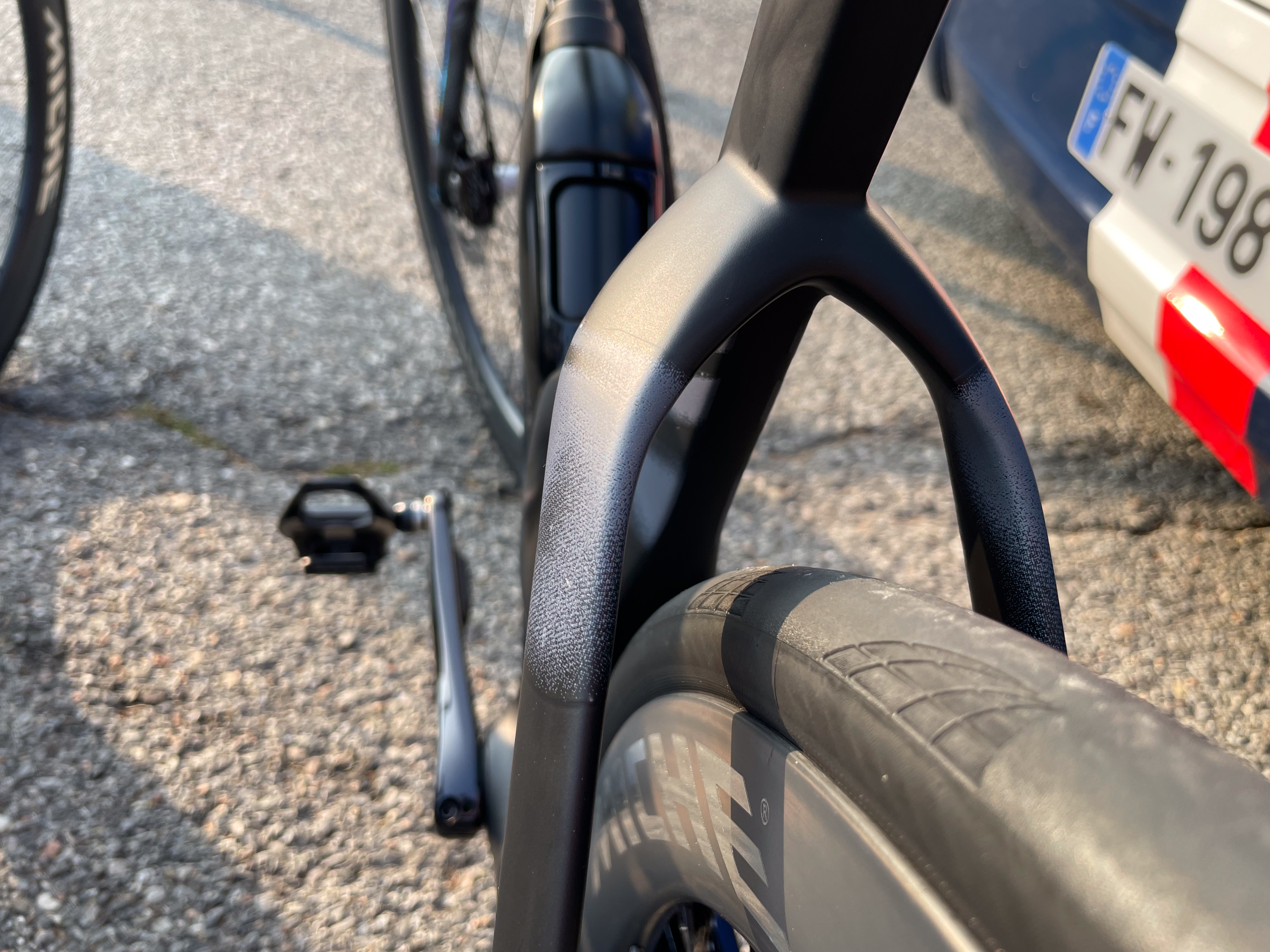
Here are the rear stays. They resemble the current bike, but the paint and lighting make it difficult to tell for sure. There’s also a healthy enough tyre clearance here; could they have been widened slightly? (Image credit: Stephen Farrand)

Comparing the existing bike with this one, the seat post clamp area also looks different. Has it been a case of lots of small refinements and improvements? (Image credit: Stephen Farrand)

This handlebar uses a more standard round top cap and not a profiled integrated one that covers everything. A prototype version, perhaps? (Image credit: Stephen Farrand)

